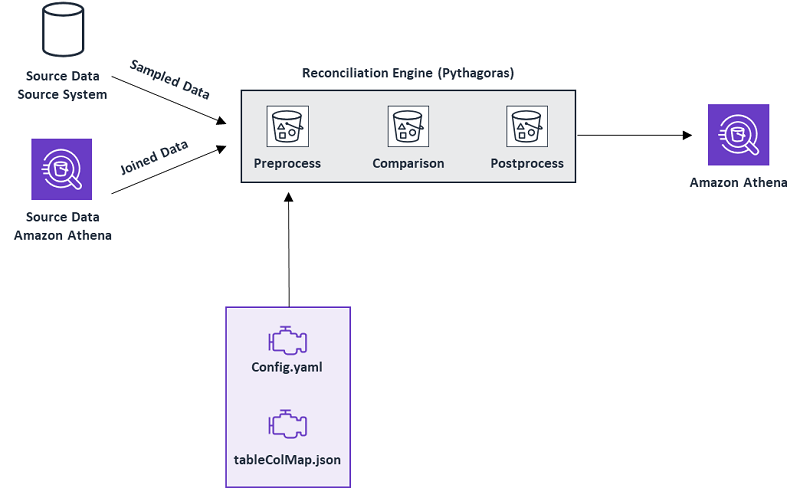AWS Big Data Blog
Category: Amazon EMR
How the ZS COVID-19 Intelligence Engine helps Pharma & Med device manufacturers understand local healthcare needs & gaps at scale
This post is co-written by Parijat Sharma: Principal, Strategy & Transformation, Wenhao Xia: Manager, Data Science, Vineeth Sandadi: Manager, Business Consulting from ZS Associates, Inc, Arianna Tousi: Strategy, Insights and Planning Consultant from ZS, Gopi Vikranth: Associate Principal from ZS. In their own words, “We’re passionately committed to helping our clients and their customers thrive, […]
Optimizing Amazon EMR for resilience and cost with capacity-optimized Spot Instances
Amazon EMR now supports the capacity-optimized allocation strategy for Amazon Elastic Compute Cloud (Amazon EC2) Spot Instances for launching Spot Instances from the most available Spot Instance capacity pools by analyzing capacity metrics in real time. You can now specify up to 15 instance types in your EMR task instance fleet configuration. This provides Amazon […]
Apply record level changes from relational databases to Amazon S3 data lake using Apache Hudi on Amazon EMR and AWS Database Migration Service
Data lakes give organizations the ability to harness data from multiple sources in less time. Users across different roles are now empowered to collaborate and analyze data in different ways, leading to better, faster decision-making. Amazon Simple Storage Service (Amazon S3) is the highly performant object storage service for structured and unstructured data and the […]
Automating EMR workloads using AWS Step Functions
Amazon EMR allows you to process vast amounts of data quickly and cost-effectively at scale. Using open-source tools such as Apache Spark, Apache Hive, and Presto, and coupled with the scalable storage of Amazon Simple Storage Service (Amazon S3), Amazon EMR gives analytical teams the engines and elasticity to run petabyte-scale analysis for a fraction […]
Implementing LDAP authentication for Hive on a multi-tenant Amazon EMR cluster
As Amazon EMR continues its widespread adoption, it’s important to enforce separation of duties using role-based access when submitting your hive jobs on EMR clusters in multi-tenant environments. In this post, we walk through the steps to set up authentication for Hive using Lightweight Directory Access Protocol (LDAP) and Microsoft Active Directory Domain Controller. Solution […]
Amazon EMR supports Apache Hive ACID transactions
December 2022: The best practice of using EMRFS consistent in this blog post is now obsolete as Amazon S3 has supported strong read-after-write consistency since December, 2020. Apache Hive is an open-source data warehouse package that runs on top of an Apache Hadoop cluster. You can use Hive for batch processing and large-scale data analysis. […]
Build a self-service environment for each line of business using Amazon EMR and AWS Service Catalog
Enterprises often want to centralize governance and compliance requirements, and provide a common set of policies on how Amazon EMR instances should be set up. You can use AWS Service Catalog to centrally manage commonly deployed Amazon EMR cluster configurations, and this helps you achieve consistent governance and meet your compliance requirements, while at the […]
Enhancing customer safety by leveraging the scalable, secure, and cost-optimized Toyota Connected Data Lake
February 9, 2024: Amazon Kinesis Data Firehose has been renamed to Amazon Data Firehose. Read the AWS What’s New post to learn more. Toyota Motor Corporation (TMC), a global automotive manufacturer, has made “connected cars” a core priority as part of its broader transformation from an auto company to a mobility company. In recent years, […]
Monitor and Optimize Analytic Workloads on Amazon EMR with Prometheus and Grafana
This post discusses installing and configuring Prometheus and Grafana on an Amazon Elastic Compute Cloud (Amazon EC2) instance, configuring an EMR cluster to emit metrics that Prometheus can scrape from the cluster, and using the Grafana dashboards to analyze the metrics for a workload on the EMR cluster and optimize it. Additionally, we also cover how Prometheus can push alerts to the Alertmanager, and configuring Amazon SNS to send email notifications.
Build a distributed big data reconciliation engine using Amazon EMR and Amazon Athena
This is a guest post by Sara Miller, Head of Data Management and Data Lake, Direct Energy; and Zhouyi Liu, Senior AWS Developer, Direct Energy. Enterprise companies like Direct Energy migrate on-premises data warehouses and services to AWS to achieve fully manageable digital transformation of their organization. Freedom from traditional data warehouse constraints frees up […]









